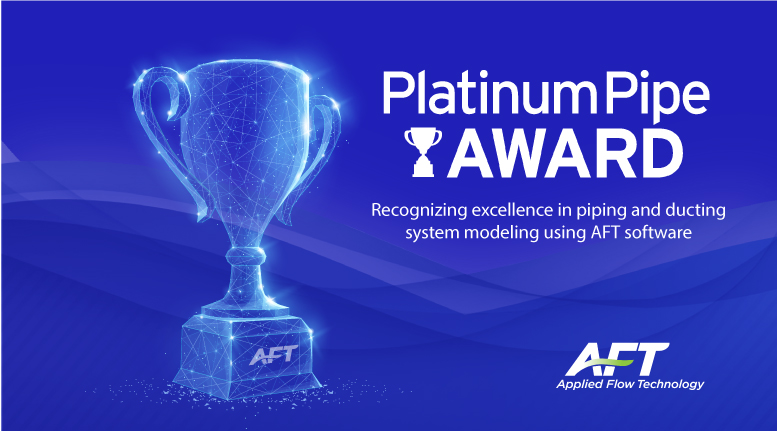AFT Blog
AFT Arrow solves all of the fundamental controlling equations governing gas dynamics. For more information about which fundamental thermodynamic equations are solved in AFT Arrow, here is an excellent article that discusses gas flow calculations in detail. The "stack effect" is simply one aspect of these equations, and is accounted for by the user input and boundary conditions. Ultimately, flow is driven by pressure difference. The higher you raise a chimney, the lower the atmospheric density and pressure at the discharge. In order to accurately model the "stack effect", the system boundary conditions must be modeled accurately. As the discharge...
Previously, I wrote an article that discussed how to account for density differences between a pump manufacturer's test fluid and a system fluid for pumps as well as the importance, https://www.aft.com/blog/entry/2014/12/02/reference-densities-for-pump-operation. Both AFT Fathom and AFT Impulse can take into account these density differences very easily, thus, reducing the efforts for the user. But what about viscosity corrections? Is it important to take this into account as well? How is this accomplished? Does it really make a difference? If the system fluid you are modeling has a HIGHER VISCOSITY (more resistant to flow) than the fluid the pump was tested with,...
You have just received a pump curve from a manufacturer to use in modeling your piping system. However, the pump manufacturer only tested their pump with water while your system fluid has a density that is different than water. These differences need to be accounted for with your flow model as well. This may sound like a bit of a daunting task up front. But there is good news! In AFT Fathom 8 and AFT Impulse 5, there are two very helpful features that will allow you to easily account for these differences with no trouble at all! The pressure rise...
With the release of AFT Fathom 8 and AFT Impulse 5, there is an incredibly useful new feature available on the Workspace called the "Quick Access Panel". This feature allows you to quickly and easily work with several useful features of the software in one area such as the Scenario Manager, Pipe and Junction Inspection, Workspace Overview Map, the Checklist, and ability to activate the add-on modules. Scenario Manager Access to the full Scenario Manager capabilities exists in the Quick Access Panel. Add new scenarios, clone scenarios, promote scenarios, re-order scenarios, add notes for scenarios, etc. Properties The Properties tab in...
An excellent new feature of AFT Impulse 5 is that it is possible to estimate the pump inertia, specific speed, and four quadrant data sets directly within AFT Impulse 5! No more need to perform external spreadsheet calculations for these estimates. In addition to that, AFT Impulse 5 can use the entered pump and power/efficiency curve to perform these estimates which makes things much easier and efficient!! First step is to enter pump curve data and generate the curve fits as shown in Figure 1. Figure 1: Pump Performance Curve from Entered Data Next, click on the "Transient" tab of...
AFT Applications have the ability to display the output in different languages. We supply files for French and Spanish with our installation which should be used. Other language files can be created using the language.dat file template. To select a new language select Output Language from the Tool menu and then select the language you would like to use. Once a new language is selected the Output Control will reflect the output parameters in that language. When the model is run and the results will be displayed in the Output tab in the selected language. The Graph Results and Visual Report...
You have just finished designing your system and built a model of your system in AFT Fathom and have convinced your team and the client that the system will achieve all the desired pressures, flow rates, and temperatures. The next big question is, “How much will this system cost?” With AFT Fathom, you have the ability to answer that question in great detail! You can easily determine the full cost of pipe materials and system components! Not only that, but you can quickly figure out how much it will cost to install and operate the entire system! You will even be...


